Crocodile Station
Lower Mitchell River, Cape York, QLD
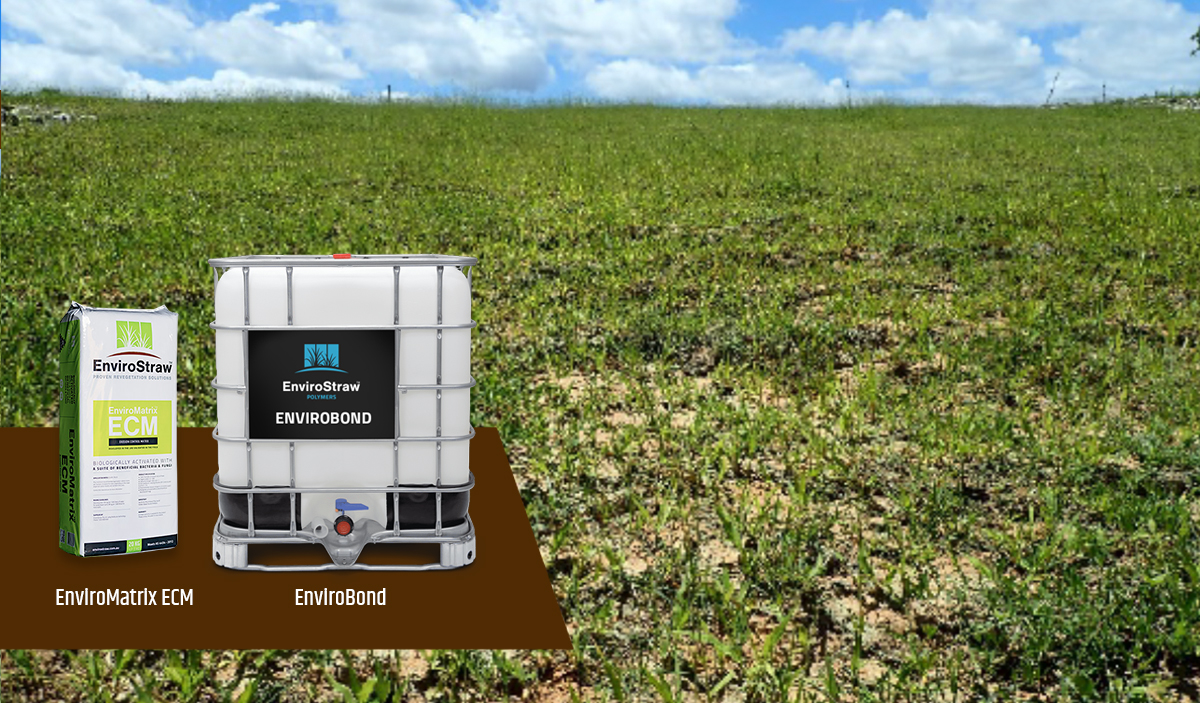
The challenge
Cape York’s Mitchell River fluvial megafan is marked by deep alluvial gullies and sodic, dispersive soils that are notoriously difficult to stabilise. At Crocodile Station, these challenges were compounded by intense seasonal rainfall and legacy erosion. Traditional methods such as compost and gypsum had shown limited long-term effectiveness in the region.
To test the performance of EnviroStraw’s erosion control and soil rehabilitation technologies in these extreme conditions, two controlled field trials were established across reshaped gully batters. The trials sought to determine which treatment could deliver effective, long-lasting erosion control and vegetation establishment with minimal input and maximum environmental return.
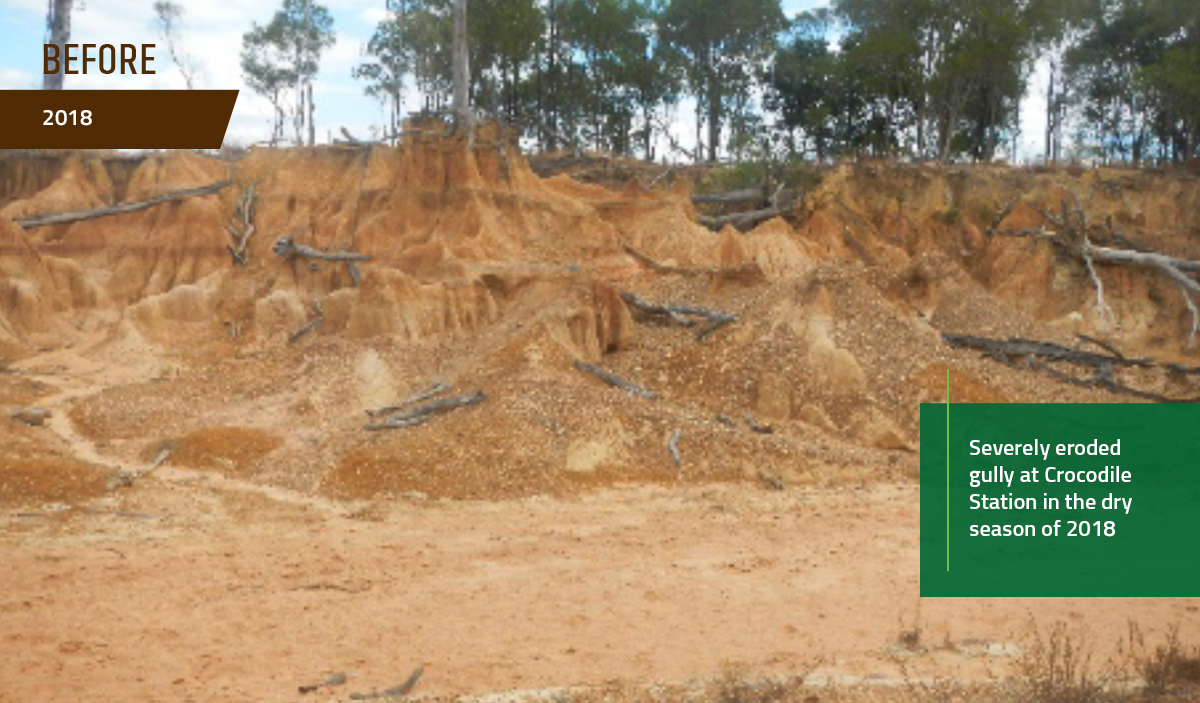
The solution
Scenario 1: Compost vs ECM
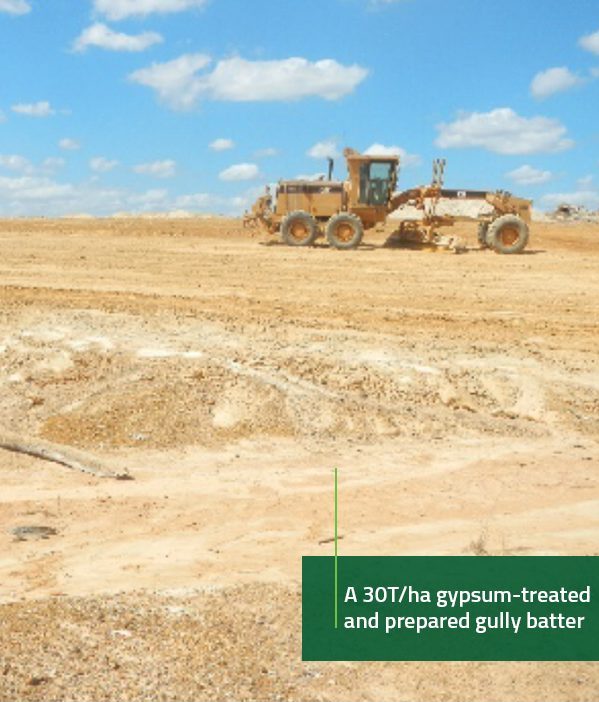
In 2018, the gully batter was initially reshaped and treated with 30T/ha of gypsum, but delays meant the site re-eroded. In late 2019, it was again reshaped and treated—this time with two side-by-side zones:
- Compost-only zone: 50T/ha of compost was applied, with seeding to mimic traditional pasture revegetation.
- ECM zone: Treated with EnviroMatrix® ECM (10T/ha) and EnviroBond (400L/ha), delivering a bonded fibre matrix engineered to resist high rainfall impact.
Both areas included rock capping at the toe and sidewalls, and were exposed to one of the most intense rainfall events in local history just 14 days after completion—with more than 747 mm falling across 8 weeks, including a 1-in-20-year storm event (197 mm in a single day, peaking at 58mm/hr).
Scenario 2: BioGrowth™ program
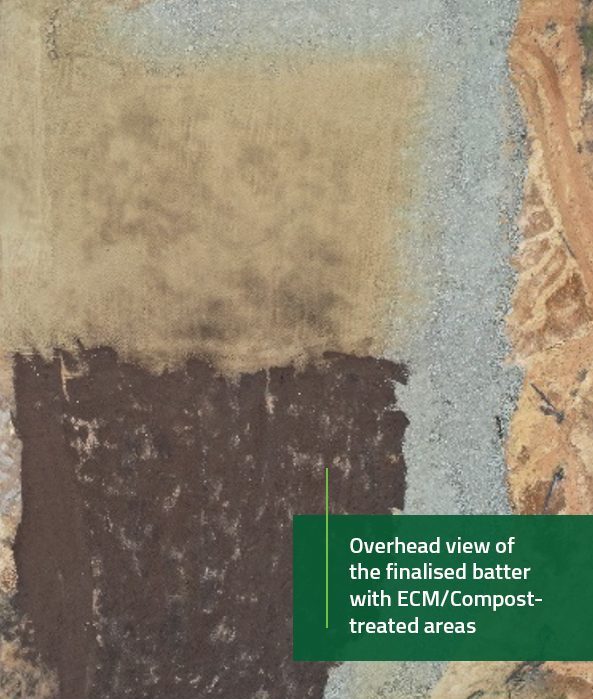
In a separate area, a second trial was conducted in 2020 to test EnviroStraw’s regenerative approach, which replaces high-rate gypsum application with a tailored nutrient and microbial strategy designed to accelerate soil function and plant establishment.
Treatments included:
- 500 kg/ha Calcium Plus and 150 kg/ha Sulphate of Potash, mixed into the subsoil to 300mm depth
- Topsoil capping (50–100mm) and track walking for stability
- EnviroMatrix® ECM (10T/ha) with EnviroBond (400L/ha)
- Rock capping at critical zones to prevent toe and slope edge erosion
The BioGrowth™ method was assessed not just for immediate erosion resistance but for its ability to rebuild functional topsoil biology and structure—essential for long-term rehabilitation.
The results
ECM vs Compost
The ECM-treated zone dramatically outperformed the compost zone in resisting early rainfall erosion and establishing vegetation:
- Surface protection: ECM-treated slopes showed minimal rill erosion—even under >50mm/day rainfall for four consecutive days.
- Vegetation cover: >70% grass cover established by mid-March 2020, compared to <50% in the compost area.
- Weeds and washout: The compost zone experienced moderate to severe rilling, extensive weed infestation (>35%), and patchy germination. In contrast, the ECM zone remained largely intact, despite cattle breaching fencing.
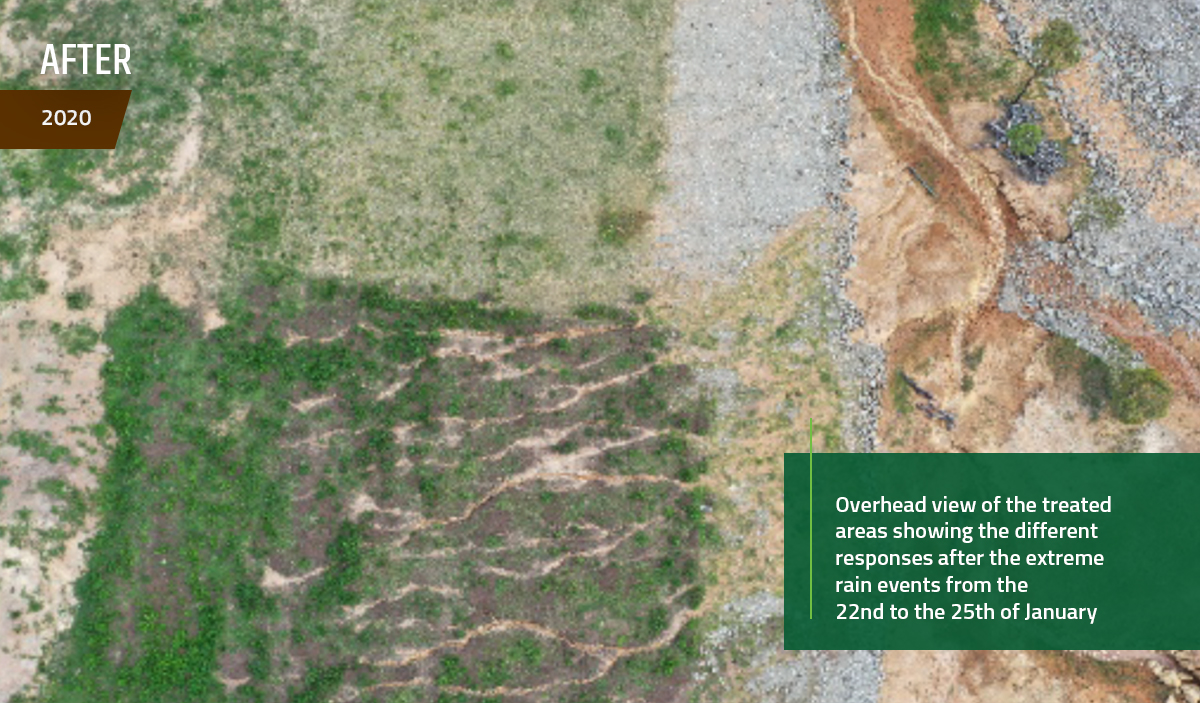
BioGrowth™ observations
Though exposed to the same harsh climatic pressures, the BioGrowth™ zone demonstrated robust performance with minor erosion limited to specific low-lying areas:
- Vegetation success: Grass cover again exceeded 70%, with minimal weed presence and solid root development across most of the batter.
- Rill formation: Limited rill erosion did occur at the bottom end—likely due to steeper-than-designed slope angles (15–20%) and hydrological flow concentration, which overwhelmed the compaction and hydromulch barrier in one concentrated section.
- Soil condition: Soil structure and plant response confirmed that the absence of gypsum did not limit performance—offering a cost and logistics advantage for future remote-area remediation.
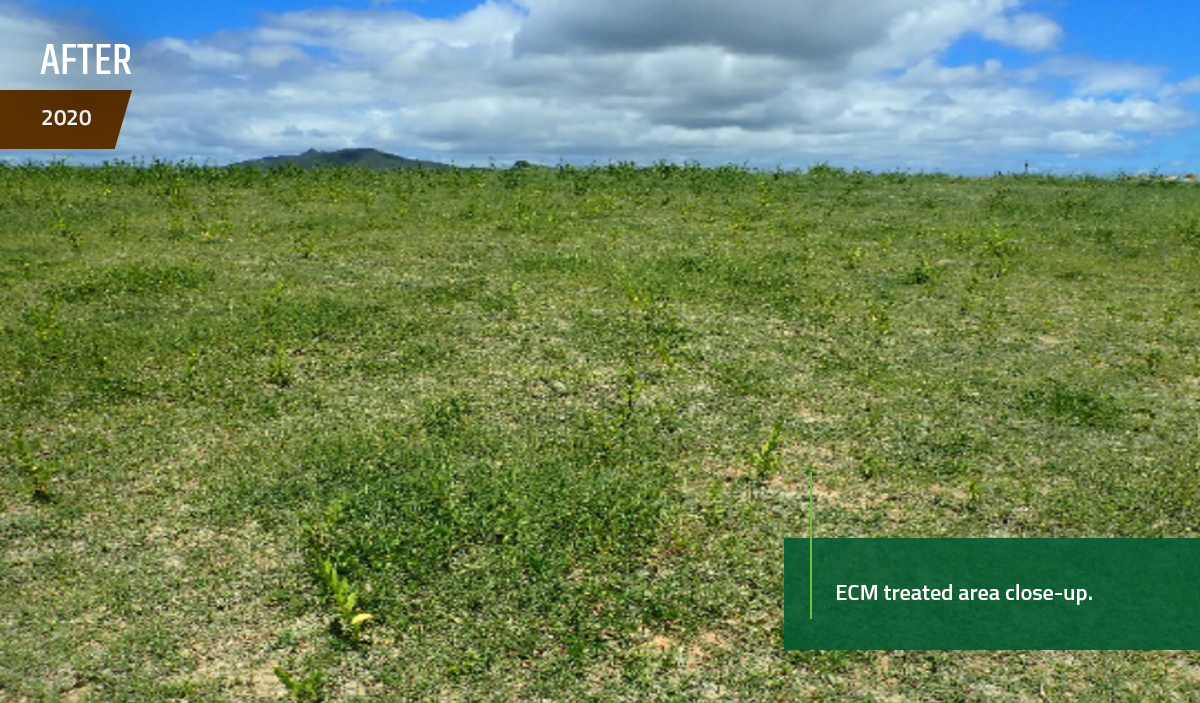
Key takeaways
- EnviroMatrix® ECM + EnviroBond consistently deliver superior protection in high-risk environments, outperforming compost across erosion resistance, vegetation density, and weed suppression.
- BioGrowth™ enables long-term success without reliance on gypsum or other heavy amendments. The program supports rapid topsoil function recovery, using soil biology, nutrient balancing and targeted stabilisation.
- Extreme rainfall readiness: Even under rare 1-in-20-year events, the ECM and BioGrowth™ approaches held firm—whereas compost-only treatments began failing before seed strike could take hold.
- Rock capping proved critical: At both sites, rock-capped zones showed the lowest erosion, supporting its continued use as part of a layered approach.
- Better hydrology = better outcomes: Where batter gradients were slightly steeper or hydrological flow not adequately redirected, erosion patterns emerged—highlighting the need for meticulous design and execution alongside EnviroStraw technologies.
This multi-year comparison confirmed the limitations of conventional compost in extreme climates and highlighted EnviroStraw’s advanced erosion control and revegetation solutions as resilient, sustainable alternatives.
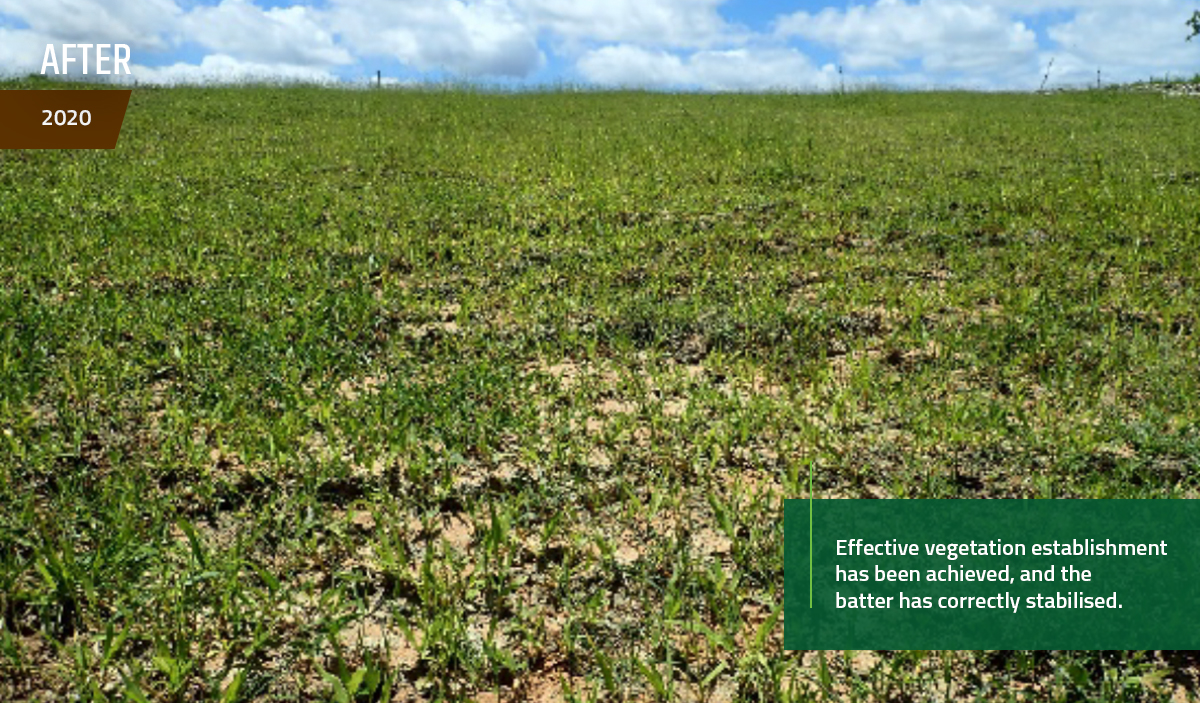
The BioGrowth™ approach in particular offers a scalable, lower-input model for restoring degraded land - even in challenging tropical environments with sodic soils and intense rainfall.